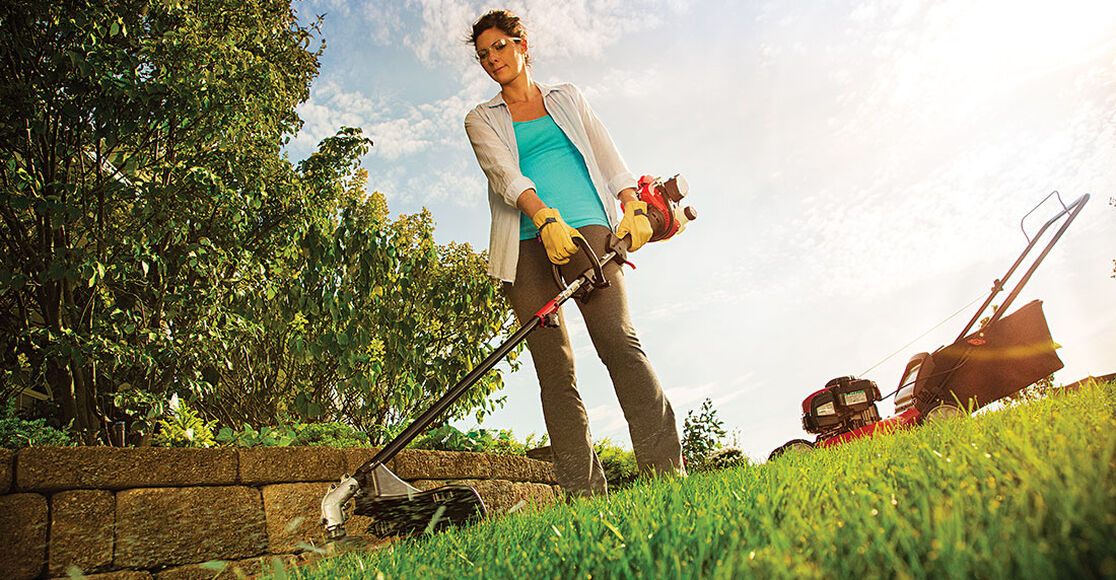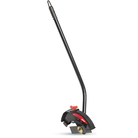String trimmers can tackle a variety of different yard projects, making it one of the most versatile tools in the shed. Whether it's tidying up walkways or removing grass from places your mower can't reach, string trimmers are a go-to tool for summer yard maintenance.
Trimming is a routine yard task; however it's important to understand the many techniques and uses string trimmers provide to help you maintain a well-kept yard throughout the season.
Edging
Edgers are used to deliver a clean, crisp perimeter along driveways and walkways. However, if you have a small- to medium-sized yard, you can use your string trimmer as an edger for a more budget-friendly, effective option. Convert your trimmer into an edger by carefully turning your string trimmer so the strings rotate vertically during use.
Or, you can use the LE720 TrimmerPlus® Add-On Lawn Edger attachment to give your paths and flower beds a clean, crisp look. (Any attachment-capable Troy-Bilt® string trimmer can use TrimmerPlus attachments to convert into a variety of tools - like an edger, cultivator or hedge trimmer, among other tools).
Tapering
Trimmers like the TB25C Curved Shaft Trimmer are built for hard-to-reach jobs like grass growth along trees, decks or fences, and in tight spaces and corners. When tending to these areas in your yard, hold your trimmer at a slight angle to get the trimmer head even with the mowed grass. Keep in mind trimmer lines can damage any trees growing nearby, so be careful not to hit them with your trimmer.
Trimming
The most obvious use for your string trimmer can also cause the most damage to your machine if used improperly. When cutting tall grass, begin trimming from the top down to prevent the string from getting tangled in the grass blades. When tackling bigger trimming jobs, start trimming in small sections rather than the whole yard all at once. This will prevent your tool from stalling or string from tangling.
Other Helpful Tips
Check to see what direction your string trimmer is rotating. For example, if the strings in your trimmer rotate counter clockwise, that means that it cuts to the right and any chopped material and debris will come out of the left side of the trimmer. To prevent this material from building up in your cutting path, keep your body towards the cutting side.
Also remember to always wear long pants and closed-toed shoes when trimming, as well as safety goggles to protect your eyes from flying debris.

